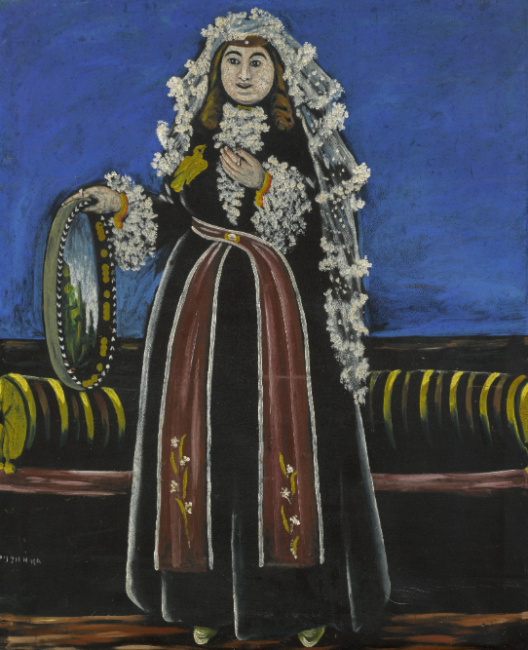You have /5 articles left.
Sign up for a free account or log in.

Sotheby's
A painting in the Stefan Zweig Collection at the State University of New York at Fredonia is up for auction today amid some faculty pushback.
The painting, Georgian Woman Wearing a Lechaki, by the Georgian painter Niko Pirosmani, is expected to sell for more than half a million dollars. According to the Sotheby’s listing, proceeds from the sale will benefit the Reed Library at Fredonia, where the collection is housed. However, Birger Vanwesenbeeck, an English professor at Fredonia who has opposed the sale since it was listed a few weeks ago, said in an interview that it is wrong for Fredonia to be selling a great work of art, even if supporting the library is a worthy cause.
The university declined to comment until after the auction is complete.
Vanwesenbeeck and his students often study the collection, which contains thousands of letters, artifacts and artworks obtained by Zweig during his lifetime. Zweig was an Austrian author of Jewish descent who is "widely regarded in the literary community as a decidedly humanitarian thinker[;] by the 1920s he was one of the most published authors in the world," according to the university website.
“I’ve been a faculty member since 2008, and I take students there almost every semester,” Vanwesenbeeck said. “Just a year ago we celebrated the 50th anniversary of the collection.”
The Pirosmani painting up for sale was gifted to the university by Harry Zohn, who acquired the painting from Zweig’s first wife in 1953.
“The sheer variety and polyglot diversity of these documents and artworks attest to the humanist in Zweig: a lover and advocate of the arts, a cosmopolitan, a generous mentor to younger writers and artists, and, in the last decade of his life, a continental European Jew forced into exile by the Nazis’ rise to power,” Vanwesenbeeck wrote about the value of the collection.
One of Vanwesenbeeck’s concerns about the sale is that the painting is being sold as a “single lot” rather than as part of a collection. It will likely go to a private party, and students and scholars will no longer have access to it.
“If we’re going to start selling … individual items, we are effectively erasing that archive,” he said. “We are effectively undoing the work of faculty and administrators who have been collecting these.”
In the past, organizations such as the Association for Academic Museums and Galleries (AAMG) and the Association of Art Museum Directors have raised concerns about similar artwork auctions. Both opposed the sale of a George Bellows painting by Randolph College in 2014, and the AAMD issued a statement in January against the sale of 43 paintings by La Salle University.
Craig Hadley, vice president for communications at the AAMG, wrote in an email that according the AAMG best practices, universities must be “committed to following AAM and museum field standards, particularly with regard to the museum’s collections, the use of deaccessioning proceeds, and collecting and gift-acceptance policies.”
Most of the time, proceeds from artwork sales are supposed to be used only to buy more art or benefit a collection in some way. The Zweig Collection is not part of a university museum and contains more than just artwork, therefore the deaccession standards for pieces in the collection may not be identical to those of museums.




